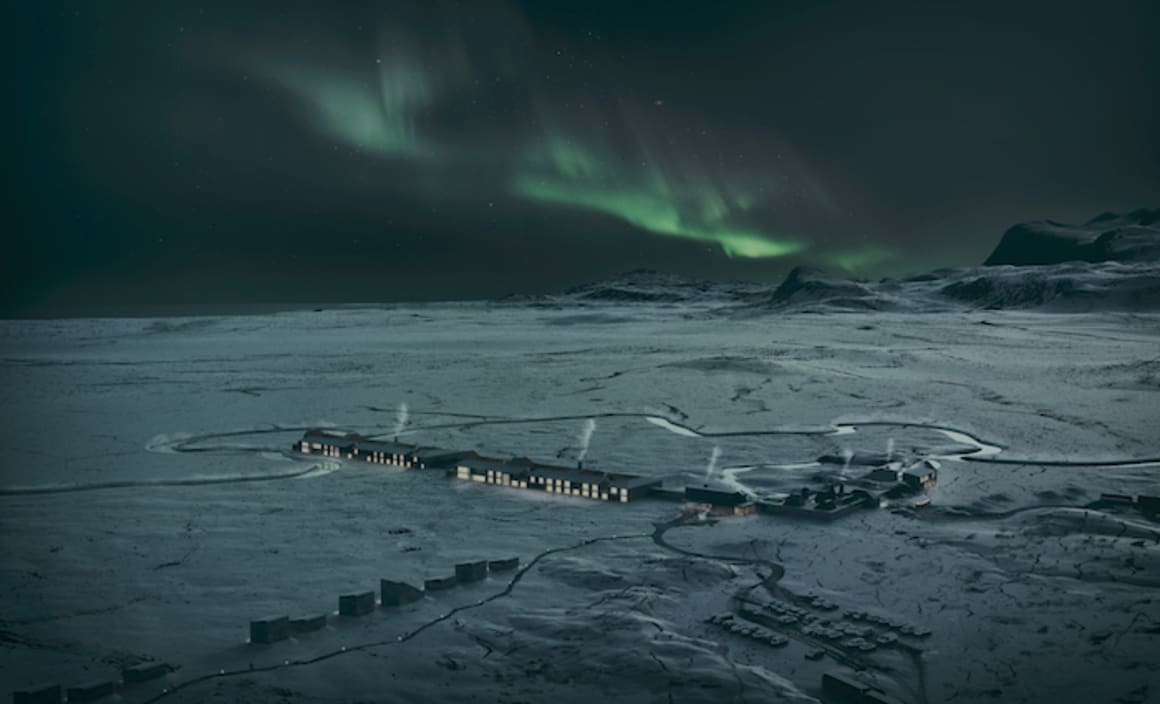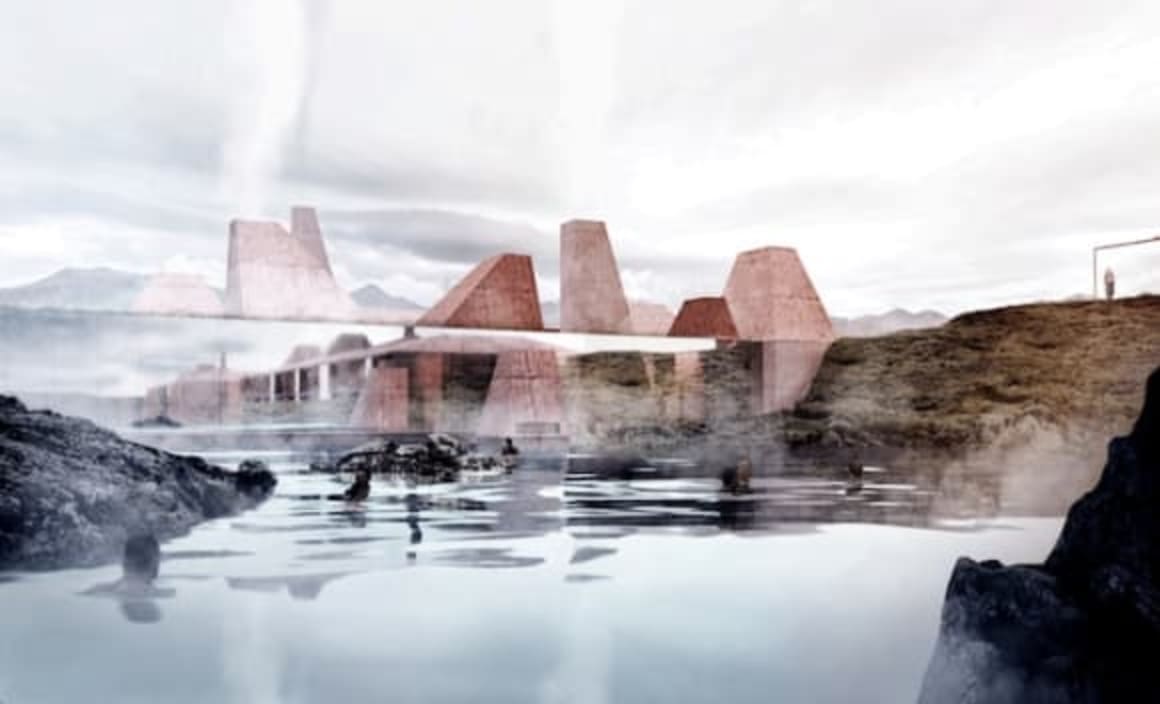Iceland spa project for the modern spiritual traveller scoops MIPIM 2018 commendation

The Red Mountain Resort, designed for Festir ehf, in Iceland has been awarded a commendation in the Retail & Leisure category at the recent 2018 MIPIM/Architectural Review Future Project Awards.
The Red Mountain Resort resort promises a sensory escape into breathtaking Icelandic nature resort for the modern spiritual traveler, the judging panel noted.
"Its architecture seduces visitors through an exploration of the interplay between nature and visitor.”
The designer Johannes Torpe Studios markets itself as an advocate for "an unrestrained and fearless approach to design."
The Red Mountain Resort is the studio’s very first large-scale architectural project.

Situated on the Western peninsula of Snæfellsness, at the point where the river mouth runs out to the sea, the resort faces Seæfellsjokull, a majestic glacier covered stratovolcano. The mountain is home to the Icelandic saga about Barður Snæfellsás, who is said to have left the chaotic world of men behind to live in solitude.
Snæfellsjökull, a 700,000-year-old glacier covered stratovolcano, inspired Jules Verne who made the volcano the passage way to the centre of the earth in his science fiction novel Journey to the Centre of the Earth from 1864.
The studio's lead architect Kit Sand Ottsen explored the tradition of Icelandic turf houses built by the first Norwegian settlers, experimenting with ways of creating a modern interpretation.
"The emerging idea was to turn the construction inside-out," he explained.

Turf houses are wooden structures insulated by a thick wall of turf - in other words, a light structure with a very heavy base.
The studio inverted this structure by creating a heavy concrete structure enclosed by a light base of glass. As a natural extension, the relationship between positive and negative space has been explored, and throughout the building there is a clear contrast between light-weight and more heavy building volumes.
The building itself is an industrial interpretation of the rocky landscape with heavy geometric shapes shooting up from the ground like sculptural rock formations and tall steam-chimneys that are an architectural take on geysers.
Concrete is chosen as the primary material and is treated with a red pigment that mimics the hue of the surrounding landscape.
The concrete is applied to create layers of contrasting rough and smooth textures and form patterns inspired by those found in the layers of the turf houses. Selected parts of the rooftops are covered with grass like the traditional building techniques of the area.
"This both intensifies the notion of a building that is closely related to the history of the site, and adds to the sense of a hidden destination that discreetly rises from the landscape," the project brief advised.
The use of reflecting glass on the building’s exterior creates a mirror effect, evoking the illusion of a building that disappears into the landscape. Portals and tunnels are additionally dispersed throughout the building to enhance this otherworldly and magical atmosphere.
The local geology is made up of caves, craters, peculiar rock formations, volcanic plugs and the moss covered lava fields.
It replicates wind tunnels, fire baths and ice pools that represent the unpredictable extremes of Icelandic weather.